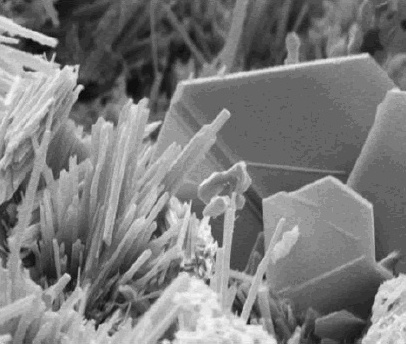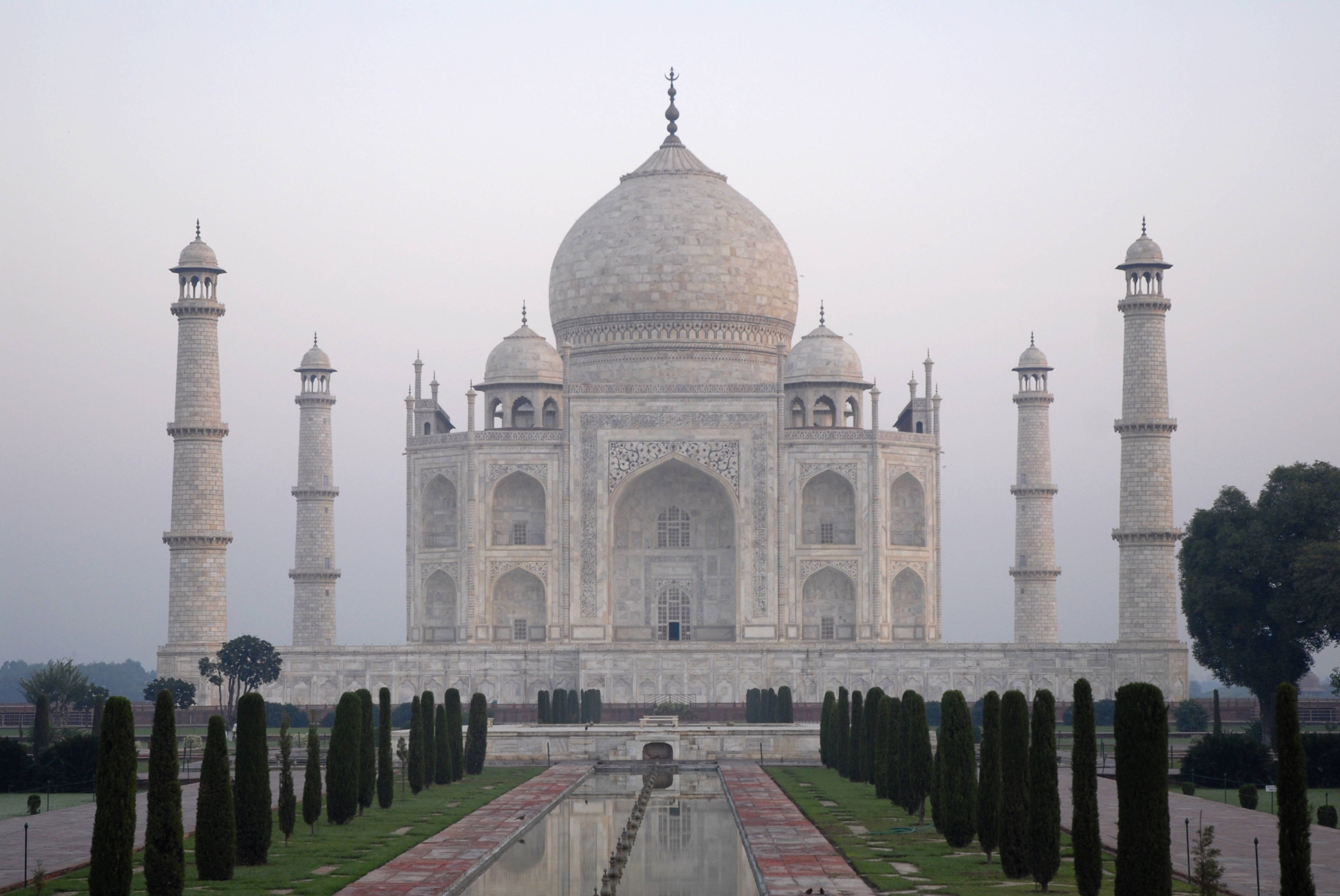|
Petha
Petha (Hindi: पेठा pronounced ) is a translucent soft candy from the Indian subcontinent made from ash gourd or white pumpkin. It is simply called ''petha'' in Hindi and Urdu.T. R. Gopalakrishnan Preparation Ash gourds, commonly referred to as white pumpkins, are a vegetable with a pale-green exterior and white, heavily seeded, savoury inside that is used to make petha. The gourd is sliced into bite-sized pieces and then cured for a few hours in a solution of Calcium Hydroxide, locally known as ''Choona'' or ''Soon''. After removing the gourd pieces from the ''Choona'' solution, they're boiled until soft, and then soaked in sugar syrup. The final candy has a sugar-crisp exterior and an almost moist, sticky interior with a firm, crunchy, and almost crystalline texture. The flavouring of Agra's confections is considered to be inventive, and candy counters in the city are rainbows of vibrantly coloured petha, flavoured with everything from paan to rose. With growing dem ... [...More Info...] [...Related Items...] OR: [Wikipedia] [Google] [Baidu] |
Uttar Pradeshi Cuisine
Cuisine of Uttar Pradesh is from the state of Uttar Pradesh (UP) located in Northern India. The cuisine of UP has a large variety of dishes. The cuisine consists of both vegetarian and non-vegetarian dishes of different varieties. Being a large state, the cuisine of UP share lot of dishes and recipes with the neighboring states of Delhi, Uttarakhand, Bihar, Jharkhand and Haryana. Braj, Awadhi, Kannuaji, Kauravi, Bundeli, Bagheli and Bhojpuri are famous subtypes of cuisine of the state. Bread As wheat is the staple food of the state, breads are very significant. Breads are generally flat breads; only a few varieties are raised breads. The breads may be made of different types of flour and can be made in various ways. Popular breads include tandoori naan (naan baked in a tandoor), tandoori roti, kulcha, taftan, sheermal, rumali roti, poori, paratha, millet (millet flour flatbread), litti, kachori, parantha. Common food *Biryani *Boondi *Chaat *Dum bhindi (fried who ... [...More Info...] [...Related Items...] OR: [Wikipedia] [Google] [Baidu] |
Agra
Agra ( ) is a city on the banks of the Yamuna river in the Indian state of Uttar Pradesh, about south-east of the national capital Delhi and 330 km west of the state capital Lucknow. With a population of roughly 1.6 million, Agra is the fourth-most populous city in Uttar Pradesh and List of cities in India by population, twenty-third most populous city in India. Agra's notable historical period began during Sikandar Khan Lodi's reign, but the golden age of the city began with the Mughals in the early 16th century. Agra was the foremost city of the Indian subcontinent and the capital of the Mughal Empire under Mughal emperors Babur, Humayun, Akbar, Jahangir and Shah Jahan. Under Mughal rule, Agra became a centre for learning, arts, commerce, and religion, and saw the construction of the Agra Fort, Sikandra, Agra, Sikandra and Agra's most prized monument, the Taj Mahal, constructed between 1632 and 1648 by Shah Jahan in remembrance of his wife Mumtaz Mahal. With the decline ... [...More Info...] [...Related Items...] OR: [Wikipedia] [Google] [Baidu] |
Peda
Peda () or Pera is an Indian sweet that originated in the city of Mathura, Uttar Pradesh, India. Traditionally prepared as thick, semi-soft round balls, its main ingredients are khoa, sugar and traditional flavourings including cardamom seeds. It is brown in colour. Variant spellings and names for the dessert include ''pedha'', ''penda'' (in Gujarati language, Gujarati) and ''pera''. History & Etymology The word ''pda'' is derived from the Sanskrit word ''Piṇḍa'' or ''Piṇḍaka'' which refers to a lump of food and also a milk & flour-based sweet in the form of a lump. ''Piṇḍaka'' as a sweet finds mention in Ayurveda, Ayurvedic & ''Pākaśāstra'' texts ranging from Charaka Samhita of the 4th century BCE to ''Bhojanakutūhala'' of 17th century CE. ''Charaka Samhita'' enlists ''piṇḍaka'' along with flour-based Indian sweets and describes them as heavy. ''Bhojanakutūhala'' describes the preparation of the sweet using milk and sugar with the use of spices like card ... [...More Info...] [...Related Items...] OR: [Wikipedia] [Google] [Baidu] |
Calcium Hydroxide
Calcium hydroxide (traditionally called slaked lime) is an inorganic compound with the chemical formula Ca( OH)2. It is a colorless crystal or white powder and is produced when quicklime ( calcium oxide) is mixed with water. Annually, approximately 125 million tons of calcium hydroxide are produced worldwide. Calcium hydroxide has many names including hydrated lime, caustic lime, builders' lime, slaked lime, cal, and pickling lime. Calcium hydroxide is used in many applications, including food preparation, where it has been identified as E number E526. Limewater, also called milk of lime, is the common name for a saturated solution of calcium hydroxide. Solubility Calcium hydroxide is moderately soluble in water, as seen for many dihydroxides. Its solubility increases from 0.66 g/L at 100 °C to 1.89 g/L at 0 °C. Its solubility product ''K''sp of 5.02 at 25 °C, its dissociation in water is large enough that its solutions are basic according to the following ... [...More Info...] [...Related Items...] OR: [Wikipedia] [Google] [Baidu] |
Times Of India
''The Times of India'' (''TOI'') is an Indian English-language daily newspaper and digital news media owned and managed by the Times Group. It is the List of newspapers in India by circulation, third-largest newspaper in India by circulation and List of newspapers by circulation, largest selling English-language daily in the world. It is the oldest English-language newspaper in India, and the second-oldest Indian newspaper still in circulation, with its first edition published in 1838. It is nicknamed as "The Old Lady of Bori Bunder", and is a newspaper of record. Near the beginning of the 20th century, Lord Curzon, the Viceroy of India, called ''TOI'' "the leading paper in Asia". In 1991, the BBC ranked ''TOI'' among the world's six best newspapers. It is owned and published by Bennett, Coleman & Co. Ltd. (BCCL), which is owned by the Sahu Jain family. In the Brand Trust Report India study 2019, ''TOI'' was rated as the most trusted English newspaper in India. In a 2021 surve ... [...More Info...] [...Related Items...] OR: [Wikipedia] [Google] [Baidu] |
The Hindu
''The Hindu'' is an Indian English-language daily newspaper owned by The Hindu Group, headquartered in Chennai, Tamil Nadu. It was founded as a weekly publication in 1878 by the Triplicane Six, becoming a daily in 1889. It is one of the Indian Newspaper of record, newspapers of record. , ''The Hindu'' is published from 21 locations across 11 states of India. ''The Hindu'' has been a family-owned newspaper since 1905, when it was purchased by S. Kasturi Ranga Iyengar from the original founders. It is now jointly owned by Iyengar's descendants, referred to as the "Kasturi family", who serve as the directors of the holding company. Except for a period of around two years, when Siddharth Varadarajan, S. Varadarajan held the editorship of the newspaper, senior editorial positions of the paper have always been held by members of the original Iyengar family or by those appointed by them under their direction. In June 2023, the former chairperson of the group, Malini Parthasarathy, w ... [...More Info...] [...Related Items...] OR: [Wikipedia] [Google] [Baidu] |
Taj Mahal
The Taj Mahal ( ; ; ) is an ivory-white marble mausoleum on the right bank of the river Yamuna in Agra, Uttar Pradesh, India. It was commissioned in 1631 by the fifth Mughal Empire, Mughal emperor, Shah Jahan () to house the tomb of his beloved wife, Mumtaz Mahal; it also houses the tomb of Shah Jahan himself. The tomb is the centrepiece of a complex, which includes a mosque and a guest house, and is set in formal gardens bounded on three sides by a crenellated wall. Construction of the mausoleum was completed in 1648, but work continued on other phases of the project for another five years. The first ceremony held at the mausoleum was an observance by Shah Jahan, on 6 February 1643, of the 12th anniversary of the death of Mumtaz Mahal. The Taj Mahal complex is believed to have been completed in its entirety in 1653 at a cost estimated at the time to be around 32 million, which in 2015 would be approximately 52.8 billion (827 million). The building complex incorporates ... [...More Info...] [...Related Items...] OR: [Wikipedia] [Google] [Baidu] |




